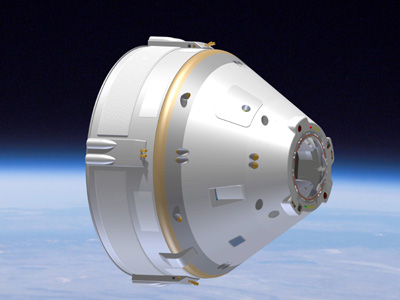Signed an agreement with the space tourism company Space Adventures on a memorandum of understanding to send space tourists to the space station, starting in 2015 on the CST-100 space vehicle

Aerospace systems manufacturer Boeing is developing a commercial space vehicle. The Boeing Company and the Space Adventures Company signed this week (September 15, 2010) in Houston a memorandum of understanding regarding the marketing of transportation services to low Earth orbit (LEO) destinations on a commercial manned space vehicle manufactured by Boeing.
In this agreement, Space Adventures will market passenger seats for commercial flights on the CST-100 Boeing Crew Space Transportation-100 space vehicle for LEO destinations. Potential consumers for these seats include private passengers, and representatives of companies, non-governmental organizations and US federal agencies other than NASA. Boeing plans to use the CST-100 to provide crew transportation to the International Space Station (ISS) and future commercial LEO platforms (private space stations).
Vice President and General Manager of Boeing's Space Exploration Division said, "By combining our talents, we will be better able to offer safe and affordable transportation to commercial aerospace customers." And he added, "Today, all commercial flights for private spaceflight participants to the ISS have been made through the Russian Space Agency's contract with Space Adventures. If NASA and international partners continue to host commercial spaceflight participants on the ISS, this agreement will be in cooperation with NASA management's stated intent to promote commercial flights in LEO low earth orbit."
Boeing and Space Adventures have not yet set a price for a seat on space flights, but they will when they reach full development. Boeing continues to develop its CST-100 space vehicle model under the Commercial Crew Development (CCDev) Space Act Agreement. Boeing won an $18 million grant from NASA under the CCDev Act agreement.
NASA has a CCDev program to use funding under Obama's 2009 American Recovery and Reinvestment Act. Intended to encourage efforts to develop and demonstrate human space flight efforts in the private sector, it entered into space agreements with several commercial companies. These NASA efforts are intended to foster entrepreneurship and jobs related to space and aviation in the public and private sectors (engineering, planning and research) and also to foster the economy and encourage the American market. By opening the private sector to space flights in low Earth orbit, NASA will close gaps in the issue of manned space flight: NASA hopes to develop, in cooperation with commercial companies, transportation systems that will transport astronauts between the International Space Station and Earth, as well as be used as a means of transportation for private space stations.
Boeing's future space vehicle, the CST-100 is designed to carry up to seven people for short missions in LEO. The spacecraft is very similar to the Apollo spacecraft that carried astronauts to the moon in the 60s and 70s, but it is larger. The CST-100 will be attached to the space station in orbit for up to seven months if needed, and will be protected while in there by a heat shield that can be removed from the vehicle. He will land with the help of parachutes to a pad lined with airbags on dry ground. The spacecraft's heat shield will be replaced to allow the spacecraft to fly once again. The design allows each vehicle to perform up to ten tasks. The vehicle will be able to fly on multiple launch vehicles and it is expected to be operational in 2015.
Space Adventures, located in Vienna, Virginia, is the only company on the market that provides opportunities for orbital spaceflight. The company provides weightless international flights, missions in orbit, flights to the edge of space and a historic return to the moon. The company claims that its customers have already spent more than two thousand hours in space, when they flew more than 55 million kilometers. The company also says that it signed a contract and flew seven participants in space flights for eight missions to the International Space Station.
Whereas Boeing's defense, space and security unit is one of the largest units in the world specializing in innovative solutions for the consumer and the manufacturer, the largest unit to create fighter planes. The unit is located in St. Louis and its business amounts to 34 billion dollars with 68,000 employees worldwide.
For information on the Boeing website
Space Adventures Company
More of the topic in Hayadan:
